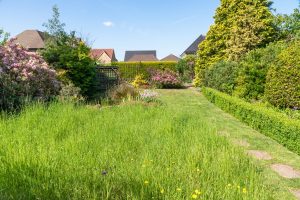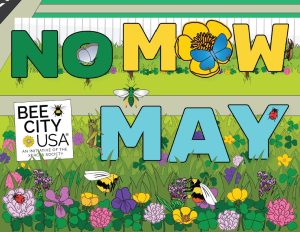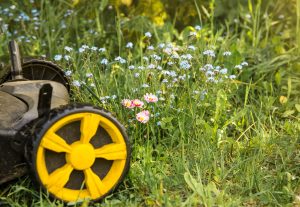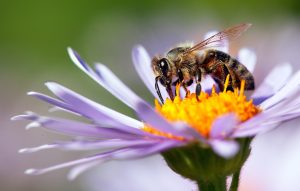 As the weather warms up and spring rolls around, many homeowners and property managers start thinking about lawn care. While keeping your lawn neat and tidy may seem like a priority, it’s important to consider the impact your lawn care routine has on the local ecosystem. Fortunately, there are many ways to support pollinators like bees and butterflies and create a healthy habitat for them right in your own backyard.
As the weather warms up and spring rolls around, many homeowners and property managers start thinking about lawn care. While keeping your lawn neat and tidy may seem like a priority, it’s important to consider the impact your lawn care routine has on the local ecosystem. Fortunately, there are many ways to support pollinators like bees and butterflies and create a healthy habitat for them right in your own backyard.
At Potter Park Zoo, we’re committed to inspiring conservation of animals and the natural world. That’s why we encourage homeowners to adopt pollinator-friendly lawn care routines. By promoting the growth of native plants and providing habitats for pollinators, we can help protect and support the animals that depend on them.
 One way to create a pollinator-friendly lawn care routine is to reduce the frequency of mowing. Many people are familiar with “No Mow May,” which is a month-long initiative encouraging homeowners to skip mowing their lawns to promote the growth of wildflowers and native plants. This provides valuable habitat for pollinators like bees and butterflies. However, it’s important to remember that this is not a one-time event. Rather, it’s about adopting a more holistic approach to lawn care that considers the needs of the local ecosystem. You can reduce the frequency of mowing throughout the growing season to allow more time for plants to flower and produce seeds.
One way to create a pollinator-friendly lawn care routine is to reduce the frequency of mowing. Many people are familiar with “No Mow May,” which is a month-long initiative encouraging homeowners to skip mowing their lawns to promote the growth of wildflowers and native plants. This provides valuable habitat for pollinators like bees and butterflies. However, it’s important to remember that this is not a one-time event. Rather, it’s about adopting a more holistic approach to lawn care that considers the needs of the local ecosystem. You can reduce the frequency of mowing throughout the growing season to allow more time for plants to flower and produce seeds.
 Another way to support pollinators is by planting native plants in your lawn. Native plants provide food and habitat for pollinators and other wildlife. Additionally, they are adapted to the local climate and require less maintenance than non-native plants. By planting a diverse array of native plants, you can create a healthy habitat for pollinators and other wildlife right in your own backyard.
Another way to support pollinators is by planting native plants in your lawn. Native plants provide food and habitat for pollinators and other wildlife. Additionally, they are adapted to the local climate and require less maintenance than non-native plants. By planting a diverse array of native plants, you can create a healthy habitat for pollinators and other wildlife right in your own backyard.
At Potter Park Zoo, we also encourage homeowners to reduce the use of pesticides and herbicides. These chemicals can be harmful to pollinators and other wildlife, as well as humans and pets. Instead, try using natural methods to control weeds and pests. For example, you can hand-pull weeds or use natural insect repellents. In addition to these steps, there are many resources available for homeowners interested in creating pollinator-friendly lawn care routines. Local wildlife or conservation organizations may have specific advice tailored to your region or ecosystem.
 By adopting pollinator-friendly lawn care routines, homeowners can make a positive impact on the local ecosystem and support the conservation of animals and the natural world. At the Potter Park Zoo, we are committed to inspiring conservation and sustainability in our community, and we encourage everyone to take small steps toward creating a more pollinator-friendly world.
By adopting pollinator-friendly lawn care routines, homeowners can make a positive impact on the local ecosystem and support the conservation of animals and the natural world. At the Potter Park Zoo, we are committed to inspiring conservation and sustainability in our community, and we encourage everyone to take small steps toward creating a more pollinator-friendly world.



